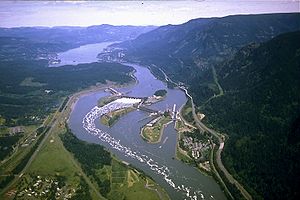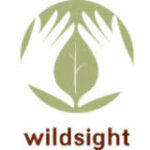Grading Rossland's sustainability efforts
We’ve got a plan to make Rossland more sustainable in place, but how is it working? That question will now begin to be answered as the Sustainability Commission works toward completing Phase Three of its State of Rossland project in the coming weeks.
“We have to monitor how well the Strategic Sustainability Plan implementation is working,” explained Jennifer Ellis when asked to explain the State of Rossland Project. “Are we implementing the plan and is it having the desired outcomes? It’s designed to highlight to council, the Strategic Sustainability Commission and Rossland residents with respect to how we’re doing and show us where we need to focus our efforts in terms of improving. “
The project, which began in earnest in the Spring of 2009, set out to establish a set of indicators that would best be able to measure the Golden City’s progress towards implementing the Strategic Sustainability Plan that was created through the Visions to Action process. Baseline data has now been acquired and attached to 26 of the 32 indicators which are now available for viewing in the State of Rossland section of the Visions to Action website.
Looking at a host of items that provide insight into the sustainability of Rossland the indicators examine information such as number of new and renewed business licenses in town, the number length and location of trails in the area, how people travel to work, population, taxes and a host of other categories based on the end state goals in the SSP.
Data for the first 26 indicators was collected through existing data, be it either from Canada Census information or the City of Rossland. The remaining six indicators had no existing data and will be the subject of a survey to be sent out to residents early next week.
“They are things like sense of community, how people feel about living in Rossland, participation in government, if they’ve been involved in City decisions or if they’ve received timely information from the City and also their participation in leisure and recreation services and programs,” explained Ellis.
In addition to that survey, in order to complete the baseline data to measure the City’s progress over time, the SC recently launched an eleven week poster campaign series running through the end of February. Each week the campaign will be featuring a different indicator with the hopes of driving residents to that section of the report on the website to see where the City stands currently.
At this stage, drawing conclusions from the report is difficult. With only baseline data to draw from, in many cases there hasn’t been enough time for significant trends to appear.
“It shows some of the successes we’ve already had and the areas we have to do more improving in,” added Ellis.” The intention of the project was to highlight where we are doing well and where we need to do more work. Even though the data, in most cases, is still preliminary we can already pick out some areas that need to be worked on or some where we are already doing quite well.”
Some of the areas where Rossland is already doing well are around recreation programs, trails, affordable housing and new business licenses in town.
In what may come as a surprise to some, Rossland is bucking the trend in our immediate area, the Columbia Basin and the province when it comes to affordable housing. The percentage of households in Rossland that pay over 30% of their income towards housing sits at 18% whereas Trail checks in at 27%, the Columbia Basin region at 21% and the Province of BC overall at 27%.
At present Rossland can boast 108.47km’s of trails in and around the City including 33.88 km’s of trail inside the City limits.
Over the past five years Rossland has also more than doubled its number of business licenses from 90 in 2005 to 201 in 2009. An encouraging trend here has been the number of new business licenses which (although there was a drop from 2008 to 2009) is remaining at a significantly higher level that just five years ago. Whereas 2005 saw just eight new business licenses taken out, 2009 saw 27 new licenses taken out.
These positive indicators, however, are offset by some of the areas where Rossland is currently not doing well.
Currently, 83% of Rosslanders drive to and from work with just 1% taking transit, 10% walking or biking and 5% riding as passengers in vehicles. A large contributing factor to that could come from another indicator which shows that just 29% percent of Rosslanders work in Rossland.
Now that the report is nearing completion, it will begin to be used by the SC, the City, and residents alike to help guide decisions both personally and by the City as to where they should perhaps place more or less energy to achieve the sustainability goals outlined in the SSP. The plan itself will be monitored and measured for its effectiveness as well as the commission’s effectiveness in implementing the plan based on the indicators results and trends over time.
“It highlights where we need to do more work but also if the SSC isn’t being implemented or maybe isn’t having the desired effect. You can create a plan with great goals but they don’t necessarily have the on the ground effect you want them to have so the big part of the state of Rossland report is to evaluate both are we implementing the plan and is the plan having the desired effect.”
Residents will soon have their own chance to grade the sustainability commission as well. In late February another survey will be sent out to Rossland residents to evaluate the commission and their progress.
Between the grading survey and the next survey to gather baseline data for the final six indicators, the commission is encouraging everyone to take part in the process to make sure the data represents the city as a whole as much as possible.
“The more people who fill out the indicator survey and the community grading survey the better,” concluded Ellis. “We’re offering prizes of $200 gift certificates to a Rossland business of the winner’s choice. The more people we hear from the better. It helps us evaluate how we are doing towards sustainability but it also helps us position Rossland as a fantastic place to live and helps us make Rossland even better.”
The State of Rossland report can be found online here


























